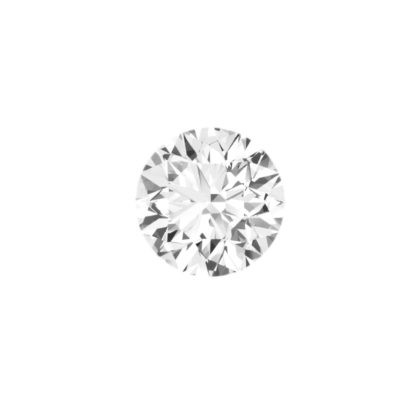Behind the cut: Rounded silhouettes
With a variety of shapes available, choosing the right cut for your engagement ring can be an overwhelming process. In the hopes to help ease this, we have put together a selection of the most popular rounded cuts on offer and the reasons as to why they’re so special!
Round cut

The most important feature of an engagement ring is its sparkle (second of course to the emotional sentiment), which is why the round cut is the most popular. Consisting of 58 facets, the round cut reflects an incredible amount of light, giving it excellent brilliance. Recent trends have seen the circular stone surrounded by a halo of diamonds for extra glamour. A drawback however is that in order to get the circular silhouette, between 28-38% of the rough stone will be wasted which increases price. The round cut’s spectacular sparkle is achieved by an expertly cut technique which focuses on creating perfect symmetry and proportion. Although officially originating in the 1800s with the invention of the bruting machine, the modern round cut as we know of it today was created by engineer Marcel Tolkowsky. During his study at the University of London in 1919, Tolkowsky’s doctoral thesis focused on the study of the reflection and refraction of light in diamonds. Within it he designed a mathematical formula which cut diamonds proportionally in order to optimise light refraction. Needless to say, Tolkowsky’s formula was successful and as a result, the round cut features as the main shape on the majority of engagement rings.
Oval cut

If you’re a fan of the round cut but looking for something a little more unique, then the oval cut is a great shape for you to consider. The elongated silhouette is incredibly elegant and was even the chosen shape for Prince Dianna’s sapphire engagement ring, now owned by Kate Middleton. The modern ideal-cut oval is credited to Lazare Kaplan who was inspired by his cousin, Marcel Tolkowsky, the creator of the ideal round cut. Traditional oval cuts share the same elegance of round cuts with 58 facets and rounded edges, but a larger surface area helps to make stones look bigger allowing you to get more for your money. The cut also creates less waste which helps to make it a cheaper alternative without scrimping on style.
Marquise cut

An important factor to consider when choosing engagement rings is how the style would look on the wearer’s hand. For those with shorter fingers, a marquise cut is the perfect choice as the pointed elliptical shape helps elongate fingers to appear slender. Unlike other cuts whose names clearly indicates their shapes, the marquise cut owes its name to Jean-Antoinette Poisson, or most commonly known as Madame de Pompadour. Poisson was the chief mistress to King Louis XV of France and a subject of his fascination. Enthralled by her lips, it is said that the King commissioned a jeweller to design a cut which reflected their ‘perfect’ shape. Poisson was also given the title of marquise of Pompadour (a ranking in-between a duke and a count) and thus, the marquise diamond was born. Although the cut radiates elegance, the craftsman chosen to cut the stone must be carefully considered as the two points require perfect alignment; a lack of symmetry will have a negative effect on the finished look.
Heart-shape

What better way is there to demonstrate your love for someone than buying them a heart-shaped engagement ring? Universally known as the symbol of love and romance, a heart-shaped cut is one of the most popular – and expensive – styles of engagement rings. Featuring 56 to 58 facets within its unique shape, the scintillating cut can only be achieved by master craftsmen by using the best tools available. Although nowadays the shape is only synonymous with love, it used to also be a symbol of royalty. An early acknowledgement of the cut dates back to 1463 when the Duke of Milan described the mystical quests of Cosimo de Medici, of Florence’s political dynasty, as a heart-shaped diamond. Afterwards, popularity for the shape grew and in 1562 a heart-shaped diamond ring was sent by Mary Queen of Scots to her sister, Queen Elizabeth. The cut then became known as a symbol of goodwill and friendship. During a similar time, nobleman Cardinal de Richelieu became known for owning a 20-carat heart-shaped diamond amongst his infamous diamond collection. The stone is said to have been later gifted to the king. Due to its unique shape, a larger carat diamond, preferably over 0.5 carats, is needed to ensure a perfect silhouette is achieved. Consequently, heart-shaped engagement rings may be quite expensive, however; can you ever put a price on love?
London DE offer a wide range of diamond and coloured gemstone engagement rings. Get in touch with them today to arrange a free consultation and to find your perfect bespoke ring.
Visit their blog to explore similar articles.
By Holly Johnson


